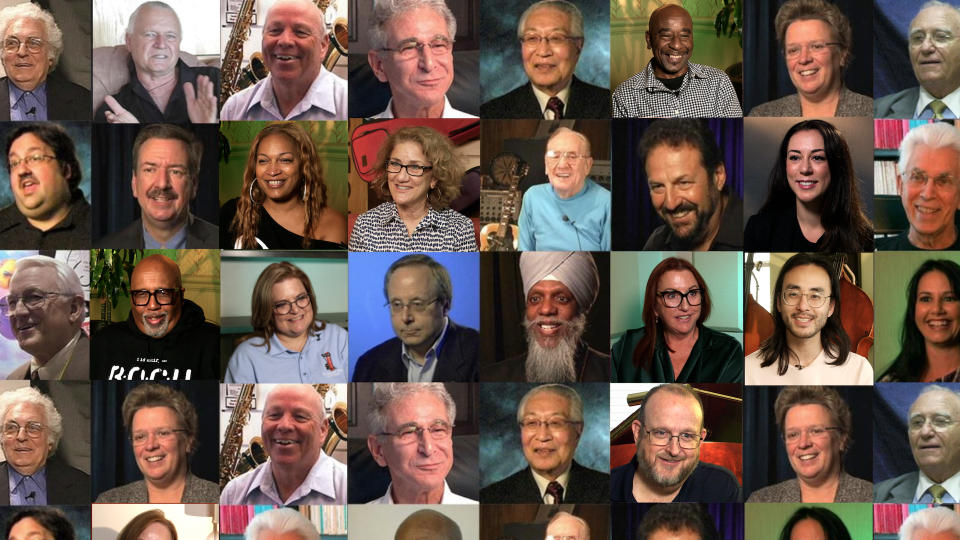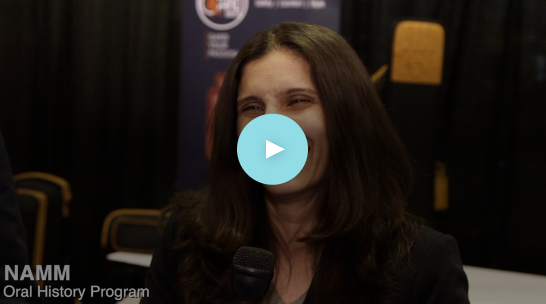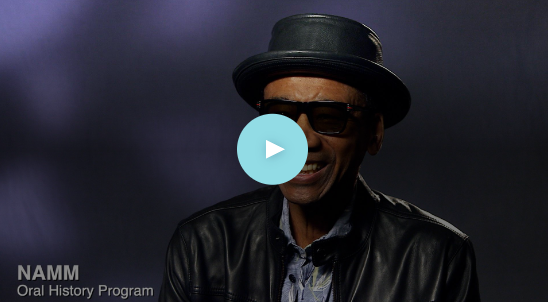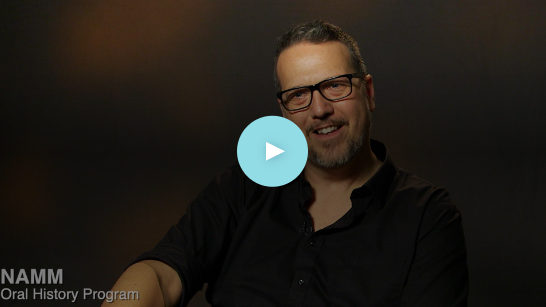Capturing the Stories of People in the Music Industry: The NAMM Oral History Program
The tradition of relaying history from one generation to the next has been an intrinsic part of the human experience. With deep roots and a passion for music, members of the music products industry have proudly and enthusiastically contributed to the NAMM Oral History Program for nearly 25 years. Through this video interview initiative, we capture the stories of those who came before us, shedding light on the creation and development of musical instruments and music products, while also highlighting the social dynamics within our industry.
This is our history as told by those who have actively participated in our growth and development. The unique format of oral history brings these narratives to life, providing a rich, first-person perspective that written records often lack. Keep reading to learn more about NAMM’s Oral History Program and its significant role in preserving the legacy of the music and music products industry.
What Is Oral History?
According to the Smithsonian, an oral history is “a technique for generating and preserving original, historically interesting information — primary source material — from personal recollections through planned recorded interviews.” The aim is to gather and preserve the stories, voices and videos of those who can share their knowledge about the music industry, their businesses and the people they knew and worked with during their careers.
This industry, being very family-oriented, brings out many fascinating stories, such as surviving the Great Depression or witnessing innovations like the launch of the Hammond Organ in 1935, or the Live Sound boom of the 1990s.
Discussing a person’s connection with music and their career dedication often uncovers facts and stories not found in a resume or short biography. Questions like “What was it like?” or “What kind of person was your mentor?” provide the foundation for meaningful and detailed answers, offering deep insights into the music industry’s inner workings.
Our method is simple: We create a comfortable environment with a relaxed format, allowing individuals to focus on the meaning of the questions rather than specific details like exact dates. This approach, akin to the tradition of passing down stories within families and communities, makes the experience enjoyable and meaningful for all involved.
We prefer conducting our interviews on video in person, as this fosters personal connections and expressive responses. These special interviews serve as primary source materials, valuable for promoting our industry and encouraging young people to get involved and explore career opportunities.
Who Is Featured in NAMM’s Oral History Program?
The NAMM Oral History collection features a diverse array of individuals from across the music industry, including manufacturers of musical instruments, music retailers, educators, live sound professionals, musicians tied to the music products industry such as endorsers and method book authors, music publishers, reps, wholesalers and music content creators. The goal is to capture their stories, their roots in music, their earliest industry connections, the mentors who shaped their careers, and some of their professional highlights in business.
The first NAMM interview was conducted on March 5, 2000, during the grand opening of NAMM’s Museum of Making Music, featuring harmonica player Bill Walden. By the program’s 10-year mark, the collection had grown to 1,120 interviews. Today, NAMM’s Oral History Program contains over 5,500 oral histories. A significant factor in the growth of the program was the advice of piano legend Henry Steinway, who emphasized the importance of including factory workers and those behind-the-scenes in addition to company presidents and owners.
NAMM Oral History Fun Facts
This collection contains:
- Individuals from 90 different countries.
- Those who personally knew or worked with legends such as Thomas Edison, John Phillip Sousa, George Gershwin, Ella Fitzgerald, Elvis Presley, Rev. Dr. Martin Luther King Jr., Walt Disney and Mahalia Jackson, among others.
- Over 200 interviewees who have been inducted into halls of fame, such as the Rock And Roll, Country, Songwriters and Blues Halls of Fame!
- Several interviewees who have broken Guinness Book records including Fender Guitars designer Billy Carson who once grew the world’s biggest watermelon.
- Many people who contributed both inside and outside of our industry, such as Anna Sipavich, a real-life Rosie the Riveter during World War II.
- At least one person born every day of the year (including leap year) and from every year spanning 100 years — from 1903 to 2003.
Examples of NAMM Oral Histories for the Music Industry
Pooja Talwar was interviewed to help us expand on the history of her family’s accessory supply company. Her father, Vijay, was interviewed 20 years ago, and since then, Pooja and her husband, Abhi Chakrabarti, became co-directors. Pooja's interview allows us to track the growth and development of a family-owned business from one generation to the next.
It is valuable to capture the connections musicians have with the supplier and retailers of the music industry. Alphonso Johnson is a perfect example of a renowned bassist who endorses the Chapman Stick and other products as well as provide clinics to encourage future music makers.
Representing the music retailer within the collection, Jamie Gale is the owner of The Music Shack in Canada. In addition, he created the Boutique Guitar Showcase at The NAMM Show to help promote independent luthiers and smaller manufacturers.
Why Music Industry Oral History Matters
Musicians and music lovers appreciate and enjoy the backstories of our industry. This explains why Abigail Ybarra, who wound pickups for Fender for over 40 years, is one of the most watched videos on our website. People care about music and value the history of instruments and gear, even small developments like innovative reeds for clarinets.
Another reason underscores the somber reality that great stories of our past are often lost when someone passes away. Since this program began, we have lost over 1,200 people interviewed. Their stories, which would have otherwise been lost, are preserved thanks to the support of our industry and this program. All NAMM oral histories are housed in NAMM’s resource center at its headquarters. Video snippets and full interviews can be found on NAMM’s website and are continually posted.
Tell Your Story
We encourage all NAMM members and the public to review the NAMM Oral History Program collection. Is your story being told? If not, we want to hear from you. Your suggestions for future interviews are warmly welcomed. If you have questions or recommendations, please email our staff at library@namm.org.
About the Author
Dan Del Fiorentino is the music historian for NAMM, leading the industry’s Oral History Program. Del Fiorentino began this project in March 2000, following his tenure as the first curator of The NAMM Foundation’s Museum of Making Music. Since then, the collection of video interviews has expanded to over 5,500, covering nearly every segment of the music products industry. Passionate about history, Del Fiorentino conducted his first interviews for his radio station program in the San Francisco Bay Area at just 16 years old.



